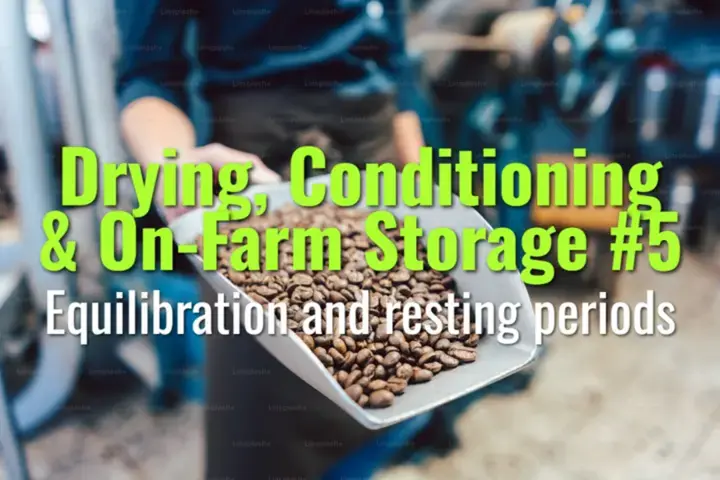Equilibration and resting periods
This topic explains equilibration and resting periods in parchment coffee storage, how they stabilize moisture and flavor, and why they are essential before hulling and export.
- Coffee Basics Nerds
- 2 min read
Article 5 of 12 in Drying, Conditioning & On-Farm Storage/

What is Equilibration?
- After drying, coffee beans may have uneven internal moisture distribution.
- Equilibration is the process where moisture levels balance out within the bean and across the lot.
- Ensures uniformity, reducing variability in roasting and cupping.
Resting Periods
- Coffee is stored in parchment for several weeks to months before hulling.
- Typical resting period: 4–8 weeks, sometimes longer for premium microlots.
- Purpose:
- Stabilize moisture at 10–12%.
- Allow flavor compounds to harmonize.
- Increase storage stability.
Benefits of Equilibration & Resting
- Cup quality: Reduces sharp or harsh flavors, enhances sweetness and clarity.
- Consistency: Beans roast more evenly when moisture is balanced.
- Shelf life: Stable coffee resists mold, staling, and quality loss.
Key Conditions
- Relative humidity: Maintain <65%.
- Temperature: Cool and stable (ideally 18–22°C).
- Packaging: Jute bags with liners or hermetic storage to avoid rehydration.
- Stacking: On pallets, away from walls and floors.
Risks of Skipping Resting
- Uneven roasting due to moisture gradients.
- Flavors may be unstable, leading to inconsistent cupping scores.
- Higher risk of re-wetting or rapid degradation during shipping.
Specialty Market Relevance
- Many specialty buyers require documented resting times.
- Equilibration is considered part of post-harvest best practice.
- Adds value by ensuring coffee arrives at peak stability and quality.
Lasting Importance
Equilibration and resting periods act as a quality safeguard between drying and hulling. They ensure that beans are uniform, stable, and flavorful, protecting farmer reputation and meeting specialty coffee standards.
You might also like:
- Tags:
- Lasting Importance
- Specialty Coffee
- Cup Quality
- Shelf Life
- Coffee Beans
- Cupping Scores
- Specialty Buyers
- Higher Risk
- Sweetness Clarity
- Post Harvest
- Jute Bags
- Coffee Arrives
- Ensuring Coffee
- Uneven Roasting
- Flavor Compounds
- Enhances Sweetness
- Quality Lasting
- Farmer Reputation
- Specialty Market
- Clarity Consistency
- Quality Loss
- Relative Humidity
- Beans Roast
- Moisture Levels
- Require Documented
- Cool Stable
- Temperature Cool